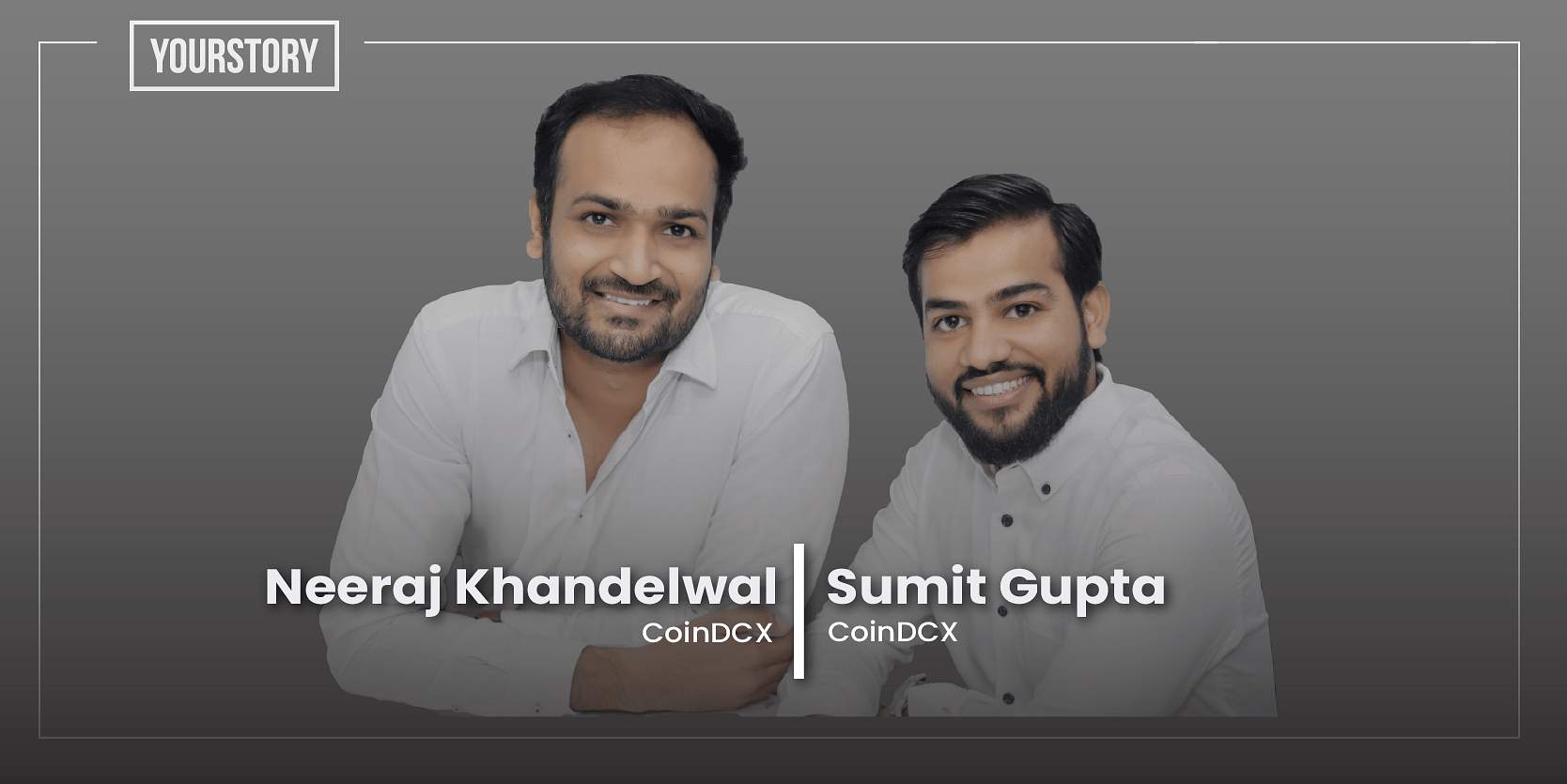The year 2018 brought cryptocurrency startups and exchanges in India face to face with their biggest challenge – the Reserve Bank of India (RBI) issued a banking ban on crypto transactions. Several crypto startups had to shut shop or continue operations while navigating numerous roadblocks.
Mumbai-based cryptocurrency startup , which incidentally began life in the same year, decided to fight the uphill battle and was among the few players that contested the regulator’s ban in court.
IIT Bombay alum Neeraj Khandelwal and Sumit Gupta had started CoinDCX with the idea of bringing different decentralised marketplaces and cryptocurrencies on to a single platform. The duo focused on developing a product that allowed traders to swiftly trade cryptocurrency, with security and ease. The RBI ban resulted in challenges such as INR gateways and liquidity.
But the tide has turned since then.
In March 2020, the Supreme Court lifted the ban on cryptocurrency exchanges and barely 3.5 years after it was launched, CoinDCX became the first crypto startup to enter the unicorn club with a $90 million funding led by B Capital.
With over 3.5 million users, it aims to make crypto more accessible in India and accelerate its efforts of bringing 50 million Indians into the crypto fold.
In conversation with YS Founder and CEO Shradha Sharma, Sumit says the team has seen the total spectrum of fundraising in the space during their journey.
“When we started the business, we put in our own capital. At one point we had deployed 90 percent of our own capital in the exchange space. We raised our first seed round, and the RBI circular came in and most investors backed out. We personally had limited runway of two to three months.”
However, the duo – picky about investors – wanted to choose those who were passionate about the space and “in it for the long haul”.
Sumit says, “We have seen several ups and downs in our journey. What helped was us keeping our heads down, focusing on what we had to do, and building.
“The crypto space is a new one with several uncertainties. One year in crypto is three years in any other sector. So now our focus is to enhance the product, and make to more simple, safe, and compliant.”
He adds that there may be several challenges in the short term, but the space will grow and create value for customers and investors.
Strong focus on product
Building and focusing on the product from day one helped CoinDCX get on the right track.
Neeraj explains they started with a simple idea: to let people buy and sell cryptocurrencies. But the platform now offers margin trading, derivatives, lending, and borrowing – financial products that add a great deal of value for the users.
“We have our pipelines full for the next two to three years, for people to easily buy, sell, trade and use different products in the crypto industry,” Neeraj says.
The funding will be used to help the company solve infrastructural challenges in the sector, and focus on security and tech. It will also be used to building stronger value in the space.
Apart from focusing on the product, the team is also building towards bringing in awareness in the space and having the right discussions with the regulatory authorities to get the needed approvals.
A long road ahead
Neeraj explains that blockchain and crypto are still in a nascent phase. “This decade is what the 90s was for the internet. I think this decade will allow trillion-dollar businesses in crypto and blockchain to flourish. And we want to be an active part of this journey.”
He feels that regulatory approvals and how the government and people accept the technology will be “critical factors”.
Sumit adds that more awareness and information are of utmost importance.
“Many consumers ask basic questions on how they can invest, what crypto is, and where they can trade. These are on-ground challenges. To build a crypto market in India, we need to educate people, policymakers, and regulators. There is little understanding of what bitcoin can do, what smart contracts can do, and how you can leverage them. And, the benefits of programming money,” Sumit says.
The team’s platform, DCX Learn, focuses on creating content that is informative and educative.
“People can start their crypto journey from the basics. There are no monetary aspects associated with this,” Sumit says. It is about consumption of content; they can start by investing as little as Rs 100.
The founders say they will be able to get more acceptance by “adding more value”.
The growing crypto market
Globally, bitcoin saw a whopping 159 percent rise in its value in a year, Ethereum saw a 337 percent year-to-date rise in value, and XRP saw 221 percent gain in value year-to-date.
There are multiple players in the space, including WazirX, Unocoin, Giotuss, Zebpay, Mudrex, and CoinSwitch. Each of these are in their own way cracking the market and the segment.
A report by Coinmarketcap.com pegged the daily trading volume in the CoinDCX exchange at around $96 million as of May last year. Sumit and Neeraj, however, say that their platform has crossed a total of $10 billion in trading volumes cumulatively, and hit that figure in February 2021.
Growth in India is coming from the 18-35 year age group, who are keen on new investing types and modes. A Chainanalysis report stated that investments in crypto grew from $200 million to over $40 billion in the past year.
Women are now learning to take more control of their finances, with cryptocurrencies being one of the key financial instruments. A CDSL survey has said that of the total individual demat accounts, 76 percent belonged to male investors. But with the emergence of the crypto market, more than 15 to 20 percent of the investments are being done by women, and this figure is on the rise.
With newer asset classes growing, the CoinDCX team believes that the market is now ripe for disruption.








![Read more about the article [Funding alert] Edtech startup Kalam Labs raises pre-seed from Y Combinator, Lightspeed, and FirstCheque](https://blog.digitalsevaa.com/wp-content/uploads/2021/08/Image2soc-1629100815980-300x150.jpg)

